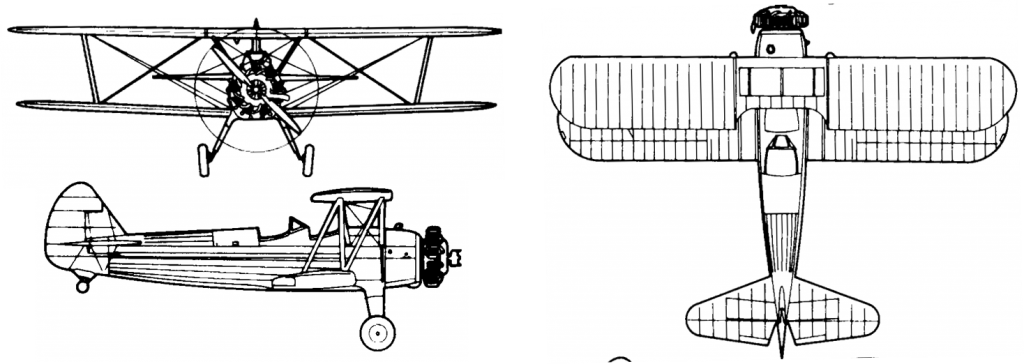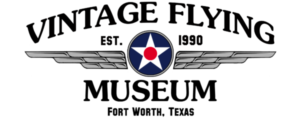
The Boeing Model 75 two-seat biplane was introduced by Stearman Aircraft Division of Boeing in Wichita, Kansas, in 1934 and became an unexpected success during World War II. Despite its almost obsolete design, its simple, rugged construction made it ideal as a trainer for novice pilots for the U.S. Army Air Corps under the designations PT-13 and PT-17 and the U.S. Navy which designated it the NS and N2S. The Navy N2S was nicknamed the “Yellow Peril” due to it’s overall yellow paint scheme and the number of new pilots who crashed it.
The PT-17 is a conventional biplane with fabric covered wooden wings, an over-built welded-steel fuselage with large, fixed tailwheel type landing gear. Accommodations for the student and instructor is in open cockpits in tandem. It is powered by a 220 horsepower, 7 cylinder, radial engine. From 1936 to 1944, Boeing built 8,584 Kaydets, in all versions, plus the equivalent of 2,000 more in spares.
Kaydets were widely used airplanes. In addition to sales to the Navy and the Army Air Corps, the trainers were sold to Canada, China, the Philippines, Venezuela, Argentina and Brazil for both military and civilian uses. Many were still in service in the early 1990s. Their slow, low-level flying capabilities made them particularly suitable for crop dusting and spraying.
The aircraft on display, PT-27 Boeing serial number 75-3876, was delivered on April 16, 1942. It was one of 300 PT-27’s that were ordered by the Royal Canadian Air Force (RCAF) via the Lend-Lease Program. The RCAF aircraft where supposed to be delivered equipped with navigation lights, canopy enclosed & heated cockpits (for the cold Canadian climate) and blind-flying hoods for instrument training, thus the PT-27 designation. However when the 300 aircraft arrived in Canada, only one of them was equipped with the enclosed cockpit and other modifications! The RCAF sent all 300 aircraft back to the U.S. and replaced them with PT-26’s which where made by Boeing’s competitor Fairchild Aircraft.
Operational History of this Aircraft:
- April 16, 1942: Received from Boeing – cost $5,930.00
- April 18, 1942: Delivered to Royal Canadian Air Force (RCAF) Winnipeg, Canada
- January 10, 1943: Returned to U.S. via Jackson, Tennessee
- 1943: Assigned to 5th Flying Training Detachment Hemet Field, California
- October 1944: Assigned to Reconstruction Finance Company Gary Field, California salvage
- November 1945: Sold to Edgar Meyer, Los Angeles, CA for $547.89 and was sold several times to various private owners in the LA area until 1951.
- July 1951: Sold to Glenn Parker of Port Arthur, TX. Converted to crop duster.
- 1951 – 1978: Worked as a crop duster for several companies in Houston area
- 1978 – 1982: Sold to private owners in Houston, TX
- June 1982: Sold to private owners in Monahans, TX
- Sept 1984: 42-15687 arrives in Fort Worth, TX
Specifications:
- Engine: Continental R-670-5 seven-cylinder air-cooled radial engine,
- Horsepower: 220 hp
- Weight: Empty 1,931 lb
- Max Takeoff 2,635 lb
- Wing Span: 32 ft. 2 in.
- Length: 24 ft. 9 in.
- Height: 9 ft. 8 in
Performance:
- Maximum Speed: 124 mph
- Cruise Speed: 106 mph
- Ceiling: 11,200 ft.
- Range: 505 miles
- Crew: Two; student and instructor
- Armament: None
